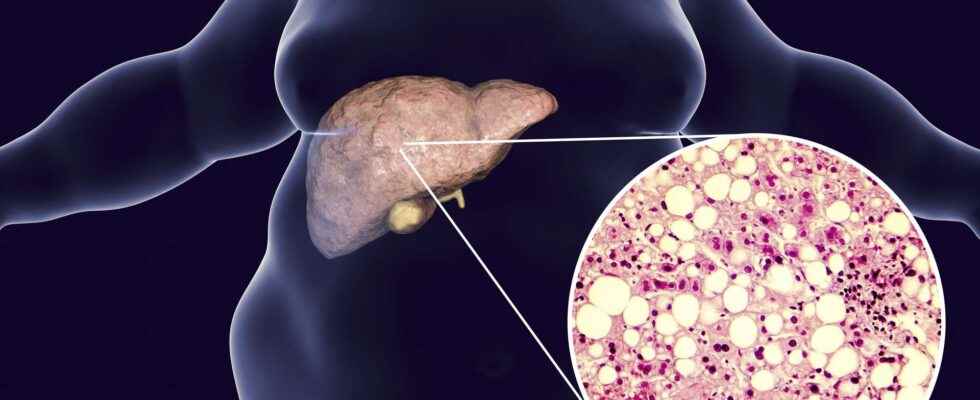Emerging liver disease, non-alcoholic steatohepatitis or Nash (Non-Alcoholic Steatohepatitis) is the severe form of hepatic steatosis also called fatty liver disease or soda disease. Difficult to identify until the most advanced stages of the disease, it is the main cause of chronic liver disease in Western countries. But if food hygiene and the fight against a sedentary lifestyle make it possible to slow down the evolution of this pathology, there is still no approved effective treatment.
You will also be interested
[EN VIDÉO] Interview 3/5: how are nutrition and life expectancy linked? In France, life expectancy is one of the best in the world, but this performance is not only linked to nutrition. Genetics may also be one of the reasons. Béatrice de Reynal, nutritionist, agreed to tell us about it during this interview.
the liver plays an essential role in the metabolism from carbohydrates and lipids. Following an abuse ofalcohol, poor diet or disease (Hepatitis C), it happens that fat vesicles accumulate in the hepatocytes, we then speak of fatty liver or steatosis. This pathology is asymptomatic, silent but may nevertheless worsen in cirrhosis Where liver cancer.
What is Nash?
The Nash is a steatosis of metabolic origin associated with hepatitis-like inflammation in people who drink little or no alcohol and who do not have viral hepatitis. Inflammation destroys liver cells over the long term, which can cause fibrosis, cirrhosis, or liver cancer. It appears in 20% of cases of metabolic steatosis and is strongly linked toobesity, to diabetes or at insulin resistance. It is also associated with the metabolic syndrome which brings together several anomalies clinical and biological, namely a obesity abdominal pain and at least two of the following factors: high rate of triglycerides, low rate of cholesterol HDL, arterial pressure high and blood sugar high without real diabetes.
In France, this pathology affects 200,000 people, according to Inserm, who are in fact at high risk of developing cirrhosis or cancer and will be, according to predictions, the most common indication for liver transplantation in the United States by 2025.
From steatosis to Nash: when to act?
Metabolic steatosis, in 80% of cases, remains benign but when inflammation sets in, it can be associated with chronic hepatitis (Nash), also called ” soda sickness “. At this point, there are no approved treatments showing significant efficacy. Nevertheless, studies showed consistency between weight loss and improved biomarkers in Nash. Diet adapted and physical activity are therefore the recommendations for a disappearance of the metabolic steatosis or a slowing down of the evolution of the Nash. Drug treatments can nevertheless intervene against the metabolic syndrome. The modification of the way of life is necessary and the care is accompanied by a therapeutic plan encouraging behavioral changes.
Interested in what you just read?
Subscribe to the newsletter Health question of the week : our answer to a question you ask yourself (more or less secretly). All our newsletters
.
fs7
